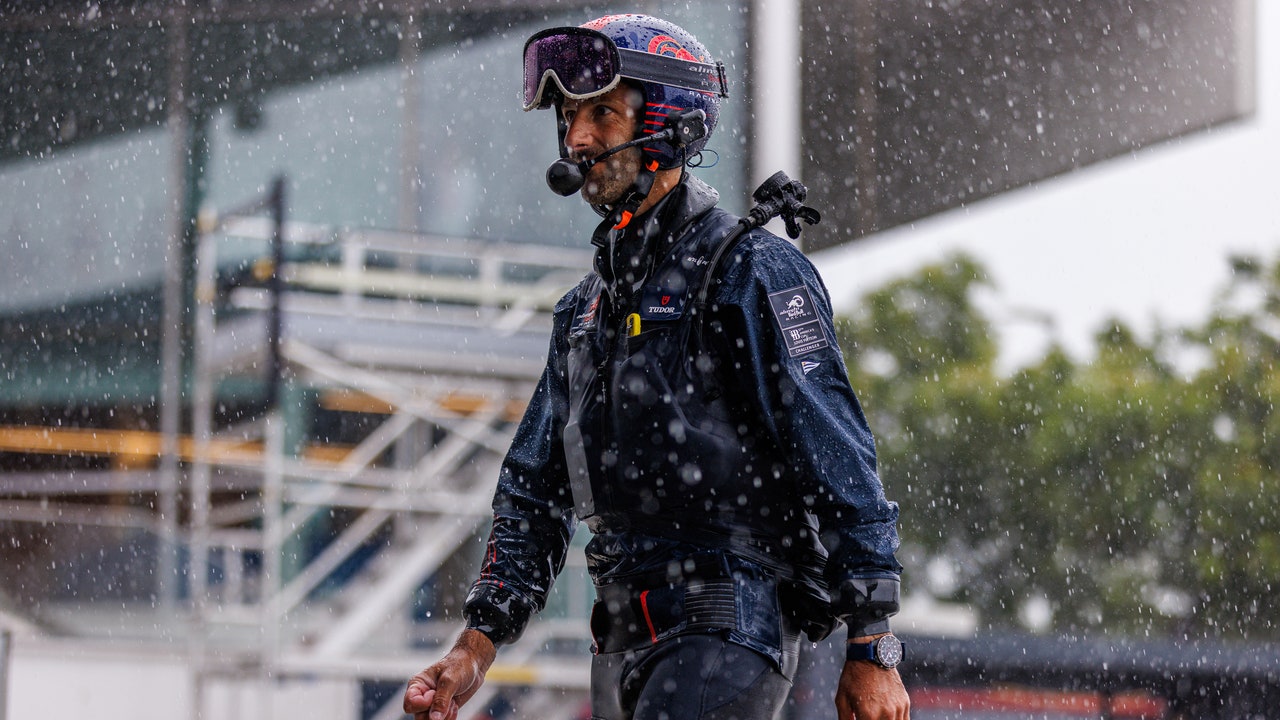The dial is a classic Tudor affair: Done up in matte Alinghi Red Bull blue, it features a snowflake handset and matching white indices, all of which are nicely lumed with plenty of Super-LumiNova. (The indices, hands, and all bezel hashmarks glow ice blue in low light.) A red second hand matches up with red “Pelagos” text—no doubt in a reference to vintage Rolex models and in keeping with other Pelagos watches—and the rehaut, which contains the outer minute track, features the words “ALINGHI RED BULL RACING” in the upper quadrant.
“Timing is important in many aspects [of what the team does],” Triay says. “It’s important in planning, such as how much time we need to train before competing, and how much time we have to design the boat. But then also, you can think about maneuvers: Are we going to do a slow, nicely controlled maneuver, or a sharp turn executed as quickly as possible? What is best, and how do you find replicable timing in order to analyze different strategies?”
Indeed, timing was everything as we sailed out into the open ocean outside Barcelona aboard the yacht in order to watch Alinghi compete against the French team. The Swiss needed to win this particular race, lest it be forced to win three in a row in the double-round robin of the Louis Vuitton Challenger Section Series—or face elimination. I was eager to try aligning my bezel to properly time the race countdown as announced aboard the ship’s television, where the race was being broadcast live.
Oriol Castello Arroyo
Stepping out onto the deck in the rain (we picked a poor day for sailing) Alinghi’s AC75 was visible in the distance, tacking hard in the driving wind and water. Its complement of ultra-skilled sailors, however, proved their competence and seamanship, crossing the starting line just as the countdown ended and gaining a significant start on the French team. Roughly 20 minutes of hard sailing later, up and down a course established by remote-controlled buoys to align with the direction of the wind, the Swiss team captured its much-needed victory.
After the win, high-fives were swapped, congratulations were offered, audible sighs of relief were exhaled. As we sailed back into harbor, we passed the AC75 furling its sails, yelling our collective “mazel tov” at the team and chase boat crews. I glanced down at the FXD and thought back to my childhood summer camp experience and the activity I most enjoyed: Sailing small Sunfish dinghies on Plunkett Reservoir. I haven’t sailed in over 20 years, but the thought suddenly crossed my mind: Maybe it’s time to sail again—Pelagos fixed firmly on wrist.

